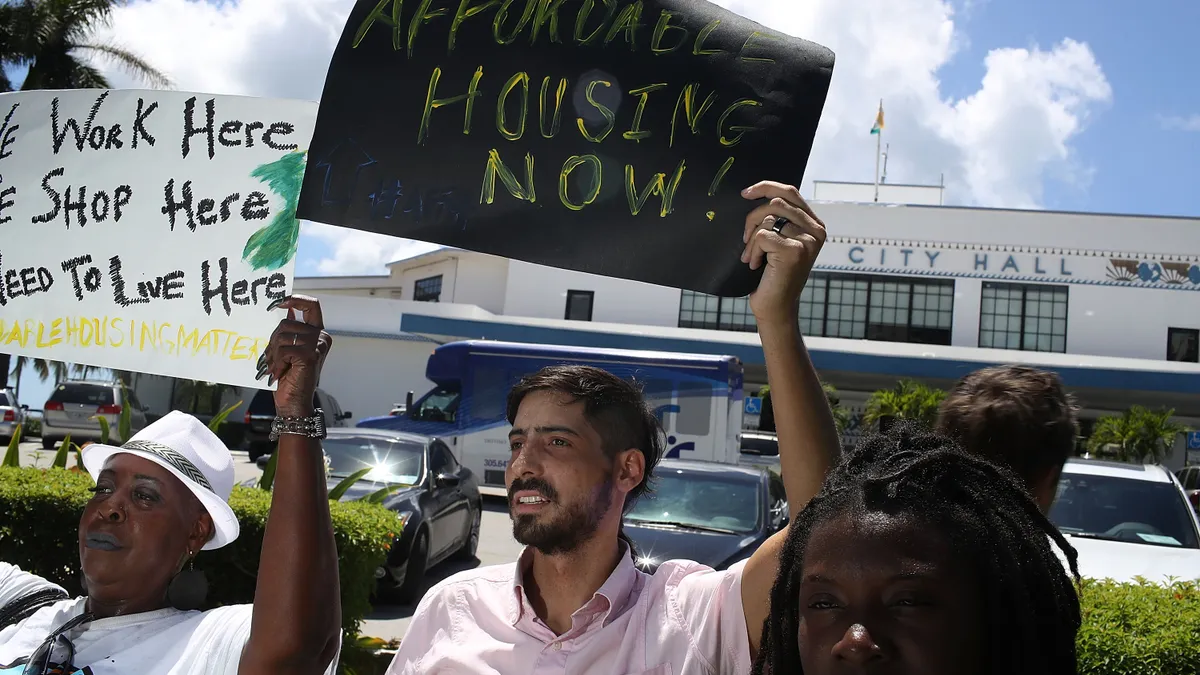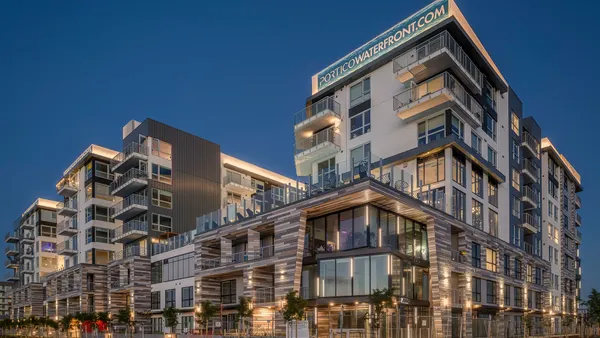This article is the third in a series looking at how a push for greater density in cities across the country is affecting the multifamily sector. Click here for the second article.
Yes, In My Backyard groups have formed in communities across the country to fight zoning and development practices that they say make housing less affordable.
What these organizations bring to the table is the ability to quickly and efficiently mobilize activists when housing projects need public support, said Karin Brandt, an urban planner who is the CEO and founder of coUrbanize, a community-engagement platform that helps developers solicit community feedback on proposed projects across North America.
“What we’ve seen from a lot of our partners that build housing is that it’s so hard and time-intensive to call in favors from people. ‘Can you please come to this three-hour hearing on Tuesday night and speak in favor of our housing project?’ is a big ask,” Brandt said.
YIMBYs often have the means and mechanisms to document support for projects through phone calls, emails and text messages, lowering the barrier for participation, she added.
Christopher Ptomey, executive director of the Urban Land Institute’s Terwilliger Center for Housing, said YIMBYs bring balance to the housing conversation by calling attention to “needs that can be addressed through development,” but he doesn’t think that’s enough to turn the tide on the housing crisis and overcome the still-stronger NIMBY movement.
Brandt finds YIMBYs to be a breath of fresh air because they promote all types of housing rather than only affordable housing — though that causes plenty of controversies.
“Will increasing the supply lower some of the costs for the lower-tier, more affordable product? That’s very hotly debated, but the research shows that in some places, that does make sense,” she said.
People like Nikolai Fedak, who launched New York YIMBY in 2011, see their pro-development message as necessary to counter major news outlets, which Fedak said “tend to be NIMBY-centric.”
But promoting any kind of luxury housing opens up YIMBYs to criticism from both NIMBYs and hard-core affordable housing advocates, who accuse them of being nothing more than shills for high-end developers.
“From the get-go, YIMBYs embraced trickle-down economics or what’s now called ‘trickle-down housing policy,’” journalist Patrick Range McDonald wrote in an article on the website for Housing Is a Human Right, an advocacy group for housing justice in California and beyond. “As middle- and working-class people have long known, trickle-down anything doesn’t work — except to make the rich richer.”
Moving forward
Ptomey’s advice to YIMBY groups is to find ways to get broader community input “so you don’t just have a few scheduled evening meetings that people can show up to or Zoom into to provide their voice.”
YIMBYs need to get out and actively gather input and insights from a wide swath of the community so they can better understand what type of information will compel a public response, Ptomey said.
People respond best to personal questions, he added. “Ask them: ‘Do you know someone looking for housing?’ ‘What are the challenges you have?’ ‘What are the constraints you see for people accessing housing?’ Use it as a way to educate people but also as a way to get constructive information back from them.”












